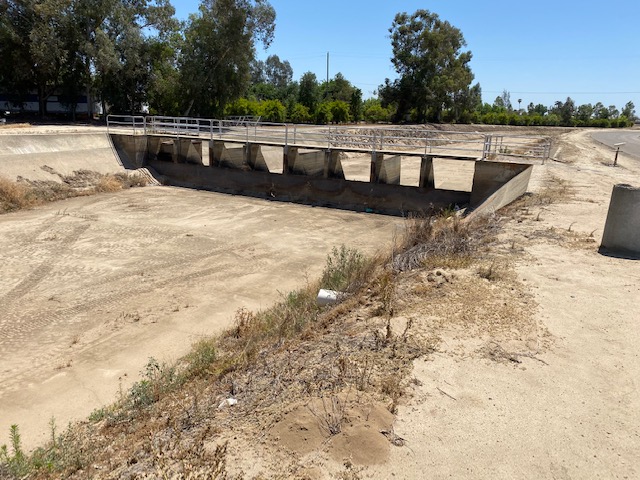By Don A. Wright
The Greater Kaweah Groundwater Sustainability Agency’s Stakeholder & Rural Communities Committee met on Monday, January 22, 2024 at the Kaweah Delta Water Conservation District offices in Farmersville. There’s another meeting in Exeter, just down the road, of the East Kaweah Groundwater Sustainability Agency at 3:00pm. Everyone is hoping this meeting will end soon enough to attend both. Actually I don’t know about everybody, but I was.
the East Kaweah Groundwater Sustainability Agency at 3:00pm. Everyone is hoping this meeting will end soon enough to attend both. Actually I don’t know about everybody, but I was.
The Meeting
Chairman Brian Watte called the meeting to order at 1:32pm. There was a roll call with enough folks to have a quorum. Committee member Paul Boyer, also former Mayor of Farmersville, came in late. It was commented he lives closer than anyone. He said his wife makes him walk and it takes him longer. Sounded good.
General Manager Mark Larsen asked Program Manager Stephanie Ruiz to give a report. She said the new website is just about ready and response to an ongoing open house has been good. Year end summaries of water use will be snail mailed to growers sometime this week.
Larsen reported the State Water Resources Control Board held a meeting in December that shuffled the deck a bit on scheduling hearings on Groundwater Sustainability Plans. The Kaweah Subbasin scheduled hearing was moved back a bit to November and that’s a good thing. It gives them some time to rewrite the plan before the hearing. Larsen said the State Board staff is tasked with producing a guidance document but they have no idea when it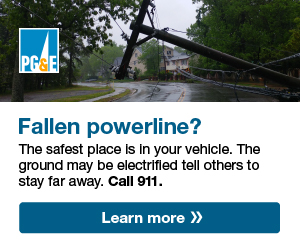 will be ready. State Board staff said it takes them about three months to review a GSP with an additional one month per each GSA within the subbasin.
will be ready. State Board staff said it takes them about three months to review a GSP with an additional one month per each GSA within the subbasin.
Well Levels
A gentleman, I believe his name is Don Tucker of Four Creeks Engineering presented a slide show on water levels and drywells that could result in different planning goals. This is called the Dry Well Susceptibility Analysis. Tucker said keeping water levels 30 feet above the bottom is the protective level in the upper aquifer. Finding these levels is part of rewriting the Kaweah Subbasin GSP.
Larsen said this is the lowest level to ensure safe water level. Committee Member Joe Cardoza asked why 30 feet and not a percentage. He said there are wells 80 feet deep and wells 150 feet deep. Tucker said this only is applicable to wells in the upper aquifer, above the clay layer.
Johnny Gailey of the Delta View Water Association said he has some heartburn over the methodology since the levels were set on very dry years. This will result in some widely swinging minimum thresholds. His concern was setting the thresholds too shallow in some areas. This could cause more pumping above the clay layer. Engineer Dave DeGroot said what has to happen is a fully contoured map of the subbasin and a differentiation of the upper and lower aquifer. Tucker and Larsen reminded everyone this is the first stab at it.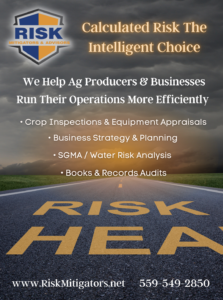
Geoff VandenHeuvel of the Milk Producers Council said it doesn’t seem reasonable to allow some of the wells to drawdown 50 feet and others six feet. He said there are better, fairer ways to deal with this. Subsidence and domestic wells will also have an impact. VandenHeuvel suggested setting a hard stop at 30 feet for all wells.
Continuing Tucker said it will cost about $2.73 million annually, worst case scenario, if vulnerable domestic wells fail. Is this a feasible price? I don’t think they know yet. He said the core water team met last week and they had similar concerns as expressed today. So, back to the drawing board if I understood correctly. Larsen said this is the worst case scenario and not measuring for minimum thresholds rather protective levels.
Subsidence
Engineer Thomas Harder gave an update on subsidence saying groundwater levels and subsidence are closely tied. Having lower than nine feet of drawdown indicates an unacceptable subsidence rate over 20-years. He said this is particularly true along the Tule River.
Harder said the State Board has hinted strongly nine feet of subsidence is too much. There will be a meeting with State Board staff. Also, he said John (Paul?) Gosselin with DWR wants the subsidence mitigated now. He said the lower aquifer minimum thresholds will have to come up. There will have to be solutions developed and included in the next GSP.
have to come up. There will have to be solutions developed and included in the next GSP.
Gailey asked how connected the neighboring subbasins are in the lower aquifer. Harder said pumping will emanate in all directions. There isn’t any hard boundary. He said much more data is needed. The amount of unknown wells isn’t know – my hyper redundant statement, not Harder’s. Harder did say and it was in agreement with DeGroot’s earlier statements; this effort will require a computer model as the calculations are intense.
Boyer asked about if the data on the wells show if they are perforated above and below. Harder said most of the wells on the westside are both above and below. VandenHeuvel said if you don’t know what is happening in the lower aquifer you’re going to have to recharge the upper in a way that has never happened before. He said multiplying eight years of groundwater change isn’t a good way to arrive at a rational result.
Harder said most of the wells on the westside are both above and below. VandenHeuvel said if you don’t know what is happening in the lower aquifer you’re going to have to recharge the upper in a way that has never happened before. He said multiplying eight years of groundwater change isn’t a good way to arrive at a rational result.
Committee member Chris Tantau asked Tucker if the line was set to arrive at cost or levels or both. Tucker said both and DeGroot said the comments have been helpful. He said a baseline will be established and that has to be contoured as the eastside is shallower than the west. He said that will start to smooth things out.
Rules & Regs
Larsen said there has been talk for sometime now about the policy and rules. He said precipitation has been one of the areas needing unity between the three GSAs in the Kaweah Subbasin. DeGroot said precipitation is relatively easy to arrive at but there are many, many methods to calculate this. Which works best is the one the Subbasin can live with.
DeGroot said the current policy is to calculate the actual precipitation within one calendar month after the rain falls. Land IQ has many weather stations in the area which are used. The Greater Kaweah GSA was looking at a 25-year rolling average which is what the rest of the subbasin is doing. But, DeGroot said, there are inconsistencies between the three GSAs long term average data sets. He said this needs to be coordinated. He asked if the 25-year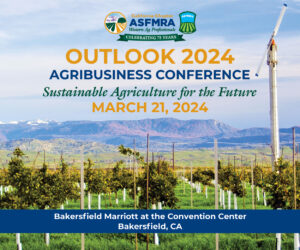 rolling average is used should it be used variably east to west across the Subbasin? There’s a seven inch difference between the east and west sides average rainfall. DeGroot showed the differences between the methods and policy. East Kaweah’s method yields them three inches more allocations based on rainfall based on the current method.
rolling average is used should it be used variably east to west across the Subbasin? There’s a seven inch difference between the east and west sides average rainfall. DeGroot showed the differences between the methods and policy. East Kaweah’s method yields them three inches more allocations based on rainfall based on the current method.
DeGroot offered to write a technical memo for all the GSAs to consider. He recommended keeping the rules based on actual precipitation or allocate 100 percent of the 25-year rolling average by one inch increments. Gailey advocated to get the sustainable yield match across the subbasin. He said it will be easier to match and make it easier for those farming in more than one GSA within the Subbasin.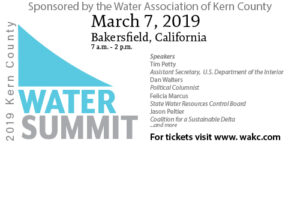
Attorney Aubrey Mauritson said there are many legal considerations and although the least complicated as possible is best – the coordination agreement may have to be changed. One good thing is the differences between the east and west side of the subbasin is fairly consistent. There is actually more rainfall on the east as it is up against the Sierra Nevada range. However, from year to year if there is say six inches in the west, there will be 10 inches in the east. If there is four inches in the west there will be eight inches in the east and so on. The committee recommended the 25-year rolling average be the preferred method presented to the board of directors. At that point I had to leave for the East Kaweah GSA meeting.
DISCLAIMER OF RESPONSIBILITY; Waterwrights strives to provide his clients with the most complete, up-to-date, and accurate information available. Nevertheless, Waterwrights does not serve as a guarantor of the accuracy or completeness of the information provided, and specifically disclaims any and all responsibility for information that is not accurate, up-to-date, or complete. Waterwrights’ clients therefore rely on the accuracy, completeness and timeliness of information from Waterwrights entirely at their own risk. The opinions expressed in this report are those of the author and do not represent any advertisers or third parties.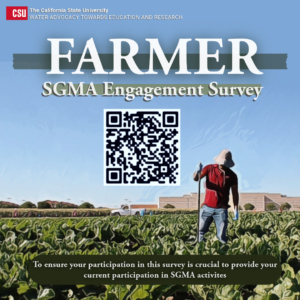
ALL RIGHTS RESERVED. Copyright 2024 by Don A. Wright
SGMA The Sustainable Groundwater Management Act of 2014 calls for the formation of Groundwater Sustainability Areas within Basins and Sub-basins to develop Groundwater Sustainability Plans.
Greater Kaweah GSA JPA – Chair Don Mills-Lakeside Water ID, Vice Chair Chris Tantau-Kaweah Delta WCD, Pete Vander Poel-County of Tulare, Ernie Taylor-Kings County WD, Stephen Johnson-Cal Water Service, Eric Shannon-St Johns WD, Paul Boyer-Rural Communities Committee, Joe Cardoza-Stakeholder Committee representative.
Mark Larsen-General Manager, Aubrey Mauritson-Legal Counsel
Offices shared with the Kaweah Delta Water Conservation District, 2975 Farmersville Blvd., Farmersville, CA 93223 Tel. 559/747-5601
DWR Listing: Basin San Joaquin Valley, Sub Basin Kaweah 5-022.11





